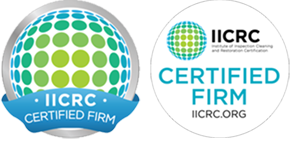
Understanding Water Damage
Water damage can be a homeowner’s nightmare, affecting not only the structure of homes but also the health and safety of their inhabitants. From the nuances of understanding water damage to the methods of resolving it, this guide will cover everything you need to know.
Types of Water Damage
- Clean Water Damage: This originates from sources like broken water lines or overflowing sinks. Though not harmful initially, if left untreated, it can progress to more severe types of water damage.
- Grey Water Damage: This type of damage involves water that contains significant chemical, physical, or biological contaminants. Sources could include washing machine overflows or toilet overflows without feces.
- Black Water Damage: The most dangerous type, it includes highly contaminated water, often stemming from sewage backups or floodwaters.
Common Causes of Water Damage
- Leaky Roofs
- Broken Pipes and Hoses
- Overflowing Sinks and Bathtubs
- Natural Disasters like Floods and Hurricanes
- HVAC Issues leading to condensation and moisture build-up
The Restoration Process
Step 1: Assessment
Before any work begins, it’s crucial to assess the extent of the water damage. Professionals will categorize and classify the damage to determine the best restoration process.
Step 2: Water Extraction
High-powered pumps and vacuums are employed to remove water from the affected areas.
Step 3: Drying and Dehumidification
After the water has been removed, special equipment is used to target remaining moisture in the home.
Step 4: Cleaning and Sanitizing
All personal belongings affected by water damage, like clothing, upholstery, and furniture, are cleaned, sanitized, and deodorized.
Step 5: Restoration
The final step involves restoring homes to their pre-water damage condition, which may entail minor repairs or major reconstructions.
Prevention: The Key to Safety
It’s always better to prevent water damage than to treat it. Here are a few tips:
- Regularly check for leaks in your home.
- Install water detection devices.
- Keep gutters and downspouts clean.
- Know the location of your main water shut-off valve.
Hiring Professionals: Why It’s Vital
In the face of water damage, professional help ensures:
- Efficiency: Professionals possess the knowledge and equipment to handle water damage effectively.
- Safety: Contaminated water can pose health risks. Experts understand how to manage these hazards appropriately.
- Cost-effectiveness: Timely and proper restoration can save homeowners money in the long run by preventing potential future damages.
Conclusion
Water damage is a challenge that requires immediate attention and expert handling. From understanding its intricacies to knowing the restoration process and the importance of hiring professionals, homeowners armed with this knowledge can address and prevent potential damages effectively. Remember, in the face of water damage, acting swiftly and wisely is the key.


